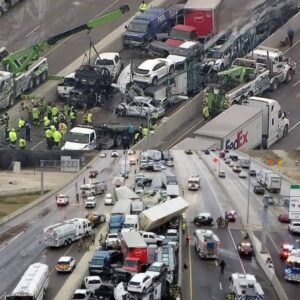On the afternoon of April 10, a catastrophic aviation accident unfolded over New York City when a helicopter crashed into the Hudson River, claiming the lives of all six individuals onboard. This tragedy, which involved a sightseeing flight carrying a Spanish family of five and the unidentified pilot, has left a community in mourning and raised pressing questions about aviation safety in urban environments. In this comprehensive analysis, we detail the sequence of events, recount firsthand witness testimonies, and outline official responses and early investigative findings. We also consider the broader implications for future operations in urban air mobility and draw lessons that may help prevent similar disasters in the future.
Overview of the Incident
Flight Details and Operational Context
At approximately 3:15 p.m. Eastern Time on April 10, a helicopter operating a sightseeing tour left a downtown Manhattan Skyport. The aircraft, a Bell 206L-4 LongRanger IV registered with the Federal Aviation Administration as N216MH, was conducting what appears to have been one of several short flights that day. According to tracking data, the helicopter had completed nine separate journeys from Lower Manhattan before the fatal flight took place. On its final leg of the day, the helicopter traversed an area near the Statue of Liberty and Governor’s Island before turning around near the George Washington Bridge, ultimately venturing along the Jersey City stretch of the Hudson River.
The flight was part of a scheduled tour service provided by New York Helicopters, a company recognized for its urban sightseeing experiences. The routine nature of the operation makes the ensuing events all the more jarring. Initially, the helicopter had been in operation for nearly three decades, with its owner, Michael Roth, a seasoned veteran in the industry. However, this tragic occurrence has forced a reexamination of not only the specifics of this flight but also broader issues concerning operational safety standards, maintenance protocols, and the challenges of managing multiple short-duration flights in a high-traffic urban area.
The Fatal Flight and Its Aftermath
Shortly after takeoff, the pilot radioed the base with an urgent call stating that the helicopter needed to refuel. This warning was a critical indicator that something was amiss even before the aircraft approached its final moments. Despite the pilot’s attempt to communicate a fuel shortage, the situation deteriorated rapidly. At roughly 3:15 p.m. ET, the helicopter plummeted into the Hudson River near Jersey City. Emergency response teams rushed to the scene within 20 minutes of the helicopter’s departure from Manhattan, but tragically, all six occupants were later confirmed dead.
Among the victims were Agustín Escobar, a Siemens executive from Barcelona, Spain; his wife, Merce Camprubi Montal; and their three young children, aged 11, five, and four. The loss of an entire family, alongside the pilot, represents an immense human tragedy. The Spanish family had been on a sightseeing trip, a fact that underscores the routine nature of the flight even as it ended in disaster.
Detailed Timeline of Events
Pre-Flight and Departure
In the moments preceding the flight, the helicopter took off from a downtown Manhattan Skyport. The aircraft, already making multiple short trips earlier in the day, had been operating on a tight schedule. The owner, Michael Roth, has stated that the pilot radioed the base with a call indicating that the aircraft needed fuel. This request – which came as the helicopter was returning for a landing – was expected to prompt a prompt refueling response. However, despite an estimated arrival time of just three minutes for the refueling service, about 20 minutes elapsed without the necessary support or any further communication that would secure the flight’s safety.
The Critical Radio Call and Its Implications
According to reports, the pilot’s radio message emphasized that the helicopter was low on fuel and that the group was in the process of returning to the helipad. This message is seen as a vital piece of the puzzle in understanding the sequence of events leading up to the crash. Michael Roth, the owner of New York Helicopter, later recounted his recollection during a conversation with The Telegraph:





